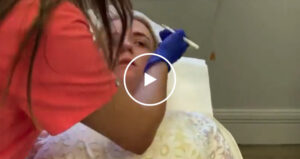The change of season means warmer weather, blooming flowers and more time spent outdoors—but for many people, it also means that rosacea flare-ups are at their peak.
Rosacea is particularly prone to aggravation during the springtime, and at The WY Skin Clinic, we notice a higher occurrence of rosacea and skin redness in our clients as spring rolls in. Here’s why skin redness and rosacea can become so problematic as the season changes, and how you can manage your symptoms to keep your skin feeling and looking as fresh as a spring blossom.
Rosacea Skin Symptoms
What is rosacea, exactly? More than just a bit of blush, rosacea is a common skin condition that is characterised by episodes of flushing. During these flushing episodes, the skin turns red, often due to increased blood flow and the dilation of the blood vessels in the area. In some cases, this flushing is accompanied by dry skin, burning or stinging sensations, spots and visible blood vessels in the skin.
Springtime is particularly triggering for rosacea because the condition can be irritated by sun exposure and heat, factors that people experience more of as the weather gets warmer. Rosacea flare-ups can be uncomfortable and possibly even embarrassing, but you don’t have to give up your spring picnics and barbecues to avoid them.
How to Prevent Rosacea
Whether you’ve been diagnosed with rosacea or your skin is just prone to redness, there are a number of ways you can prevent and treat flare-ups. First, consider the basics: try to avoid the factors that exacerbate redness, like sun exposure and excessive heat. Always apply sunscreen and shade the affected areas by wearing a hat. These preventative measures may seem intuitive at this point, but their importance cannot be overstated.
How Can We Help
You should also build on your knowledge by seeing a doctor about your skin. At WY, we begin our consultations by carrying out a computerised Visia skin analysis. This technology allows us to examine your skin below the surface, to see the redness at its source.
Rosacea is often accompanied by acne and other skin issues. Our skin analysis helps our doctors determine the factors that are contributing to your skin issues. We then use the results of this analysis to develop a treatment plan that is bespoke to you.
Particularly for skin conditions like rosacea, for which there is no ‘cure’ and no definitive cause, a highly personalised treatment method is extremely important. We consider a wide variety of factors when planning our approach to your skin, including stress, diet, sleep and other skin problems you’re coping with. Depending on the results of our analysis, we may recommend antibiotic creams, specific skin care advice and products or revitalising, non-invasive treatments to reduce your skin’s redness and counteract the inflammatory effects of rosacea.
Dealing with rosacea and skin redness in the springtime can be frustrating, but it’s certainly not any reason to miss out on all the fun the season has to offer. Book an appointment with the experienced team The WY Skin Clinic today to learn how we can treat your redness and leave your skin sparkling this spring.






